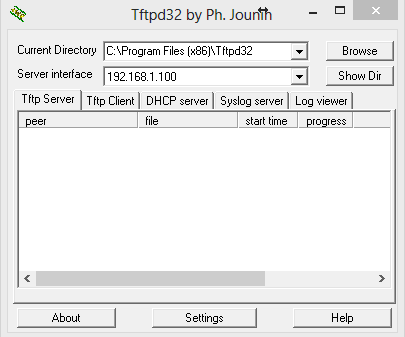

- #Check tftp client connection install
- #Check tftp client connection full
- #Check tftp client connection download
- #Check tftp client connection windows
Set permissions to allow everyone full access to /tftpboot and all contents:ĭrwxr-xr-x 4 fog root 4096 Apr 29 18:37.

The below image demonstrates disabling the firewall which allows TFTP traffic to pass.Ĭheck permissions on /tftpboot directory by using:
#Check tftp client connection windows
It's necessary to disable the Windows firewall when using windows for testing. To set the firewall for Linux to only allow what is necessary, please see the FOG security article. Start -> Control Panel -> View by "Small icons" -> Windows Firewall -> Turn Windows Firewall On or Off -> Turn off all three. This setting in the above file will deny traffic from any source except locally: If disabled, the output should look like this:
#Check tftp client connection install
Ensure that the supplied user has permission to the /tftpboot directory (see permissions).ĭisable & Verify Firewall Fedora 20/21/22/23ĭisable/stop Firewall systemctl disable rvice systemctl stop rviceĬheck Firewall in Fedora 20/21/22/23 systemctl status rvice Fedora 16Īdd /bin/bash to /etc/shells as the vsftpd yum install does not do it correctly causing tftp timeout message X.x.x.x/fog/management -> FOG Configuration -> FOG Settings -> TFTP Server ->Įnsure that the below settings are set to a local FOG linux user that actually exists.

Man tftpd-hpa FOG Configuration (web interface) # Remove the 0.0.0.0 part of this line above in the config.Įxplanation of settings for /etc/default/tftpd-hpa:

# If you are experiencing issues on Ubuntu or Debian with the default configuration, # "0.0.0.0:69" means to use any interface while ":69" means to use anything. # Note: TFTP_ADDRESS=":69" is also valid. # and to start the installation process for some operating systems.Įxplanation of settings for /etc/xinetd.d/tftp:
#Check tftp client connection download
#The tftp protocol is often used to boot diskless workstations, download configuration files to network-aware printers, # description: The tftp server serves files using the trivial file transfer # protocol. Sudo /etc/init.d/xinetd enable TFTP Settings file Fedora: Linux tftp -v x.x.x.x -c get pxelinux.0 TFTP Service Fedora 20/21/22/23 You may use the above Linux & Windows methods, but simply replace the file name with pxelinux.0 To test TFTP on 0.32 and below, you need to try to get the pxelinux.0 file instead of undionly.kpxe The best way to guarantee that your windows firewall isn't blocking TFTP is to turn it off during your troubleshooting.Ĭontrol Panel -> Programs and Features -> Turn Windows Features on or off -> TFTP Client To test from windows, TFTP Client must be installed and the Firewall must allow TFTP Traffic. Try to get a file with Windows tftp -i x.x.x.x get undionly.kpxe Testing using Windows Getting from x.x.x.x:undionly.kpxe to undionly.kpxe Tftp -v x.x.x.x -m binary -c get undionly.kpxe Normally, you can use your Linux installation medium to live boot on another computer. This is ran from a separate Linux machine, NOT your FOG server. Testing TFTP Try to get a file with Linux Normally, the boot-files for FOG are located in /tftpboot Generally, TFTP offers these boot files. TFTP is very simple and has very little protections in place Generally read-only is preferred for files offered by TFTP, however full permissions will work too. TFTP is used to download the boot-file specified by either DHCP or ProxyDHCP.


 0 kommentar(er)
0 kommentar(er)
